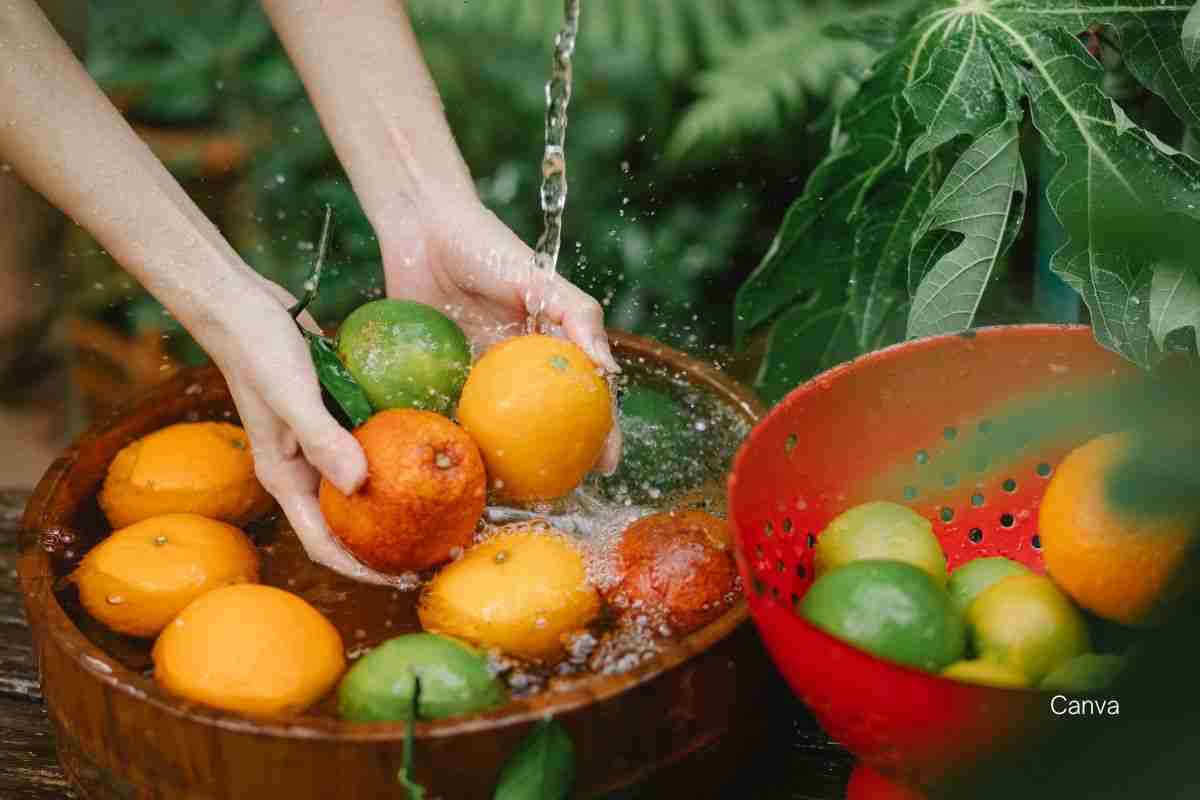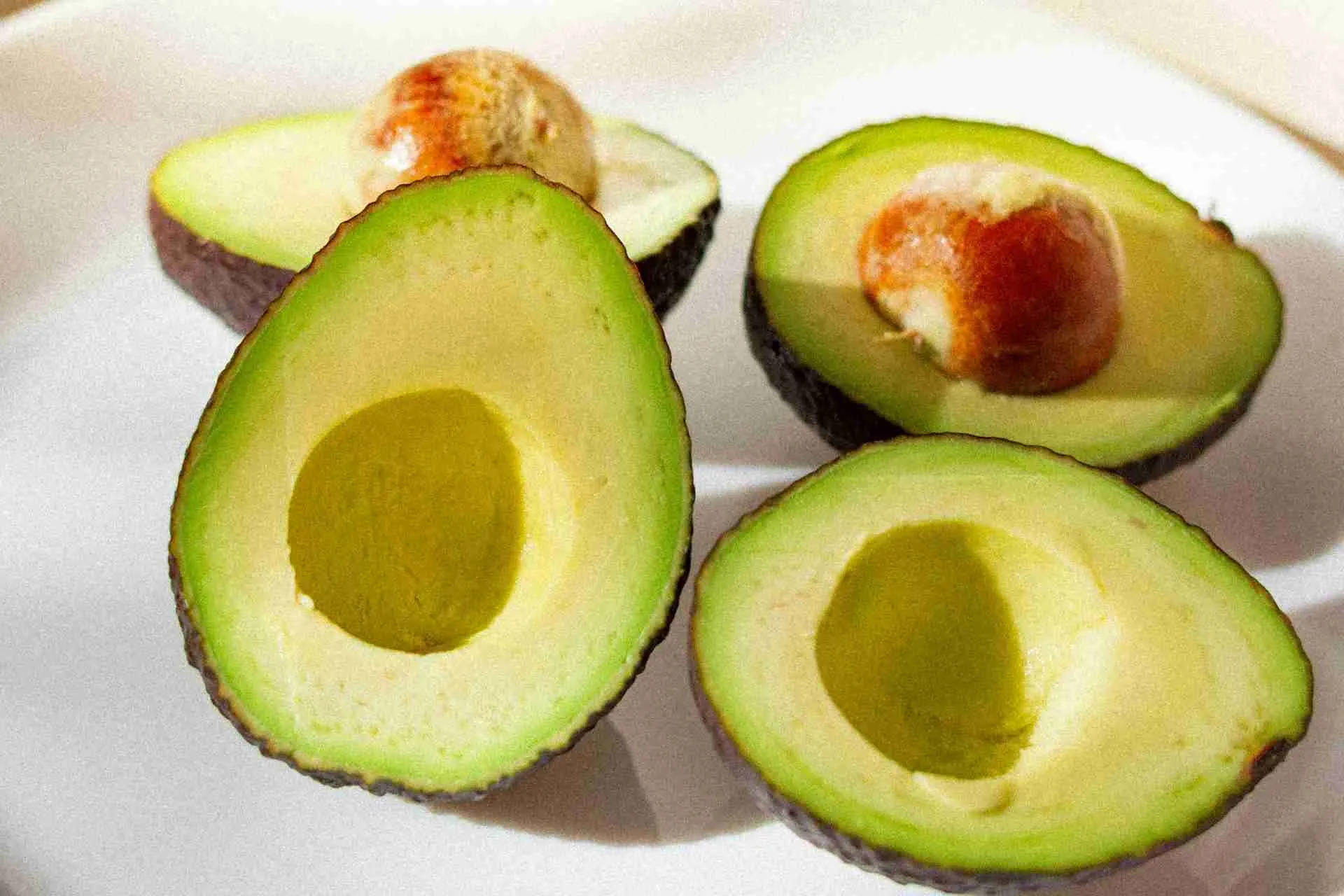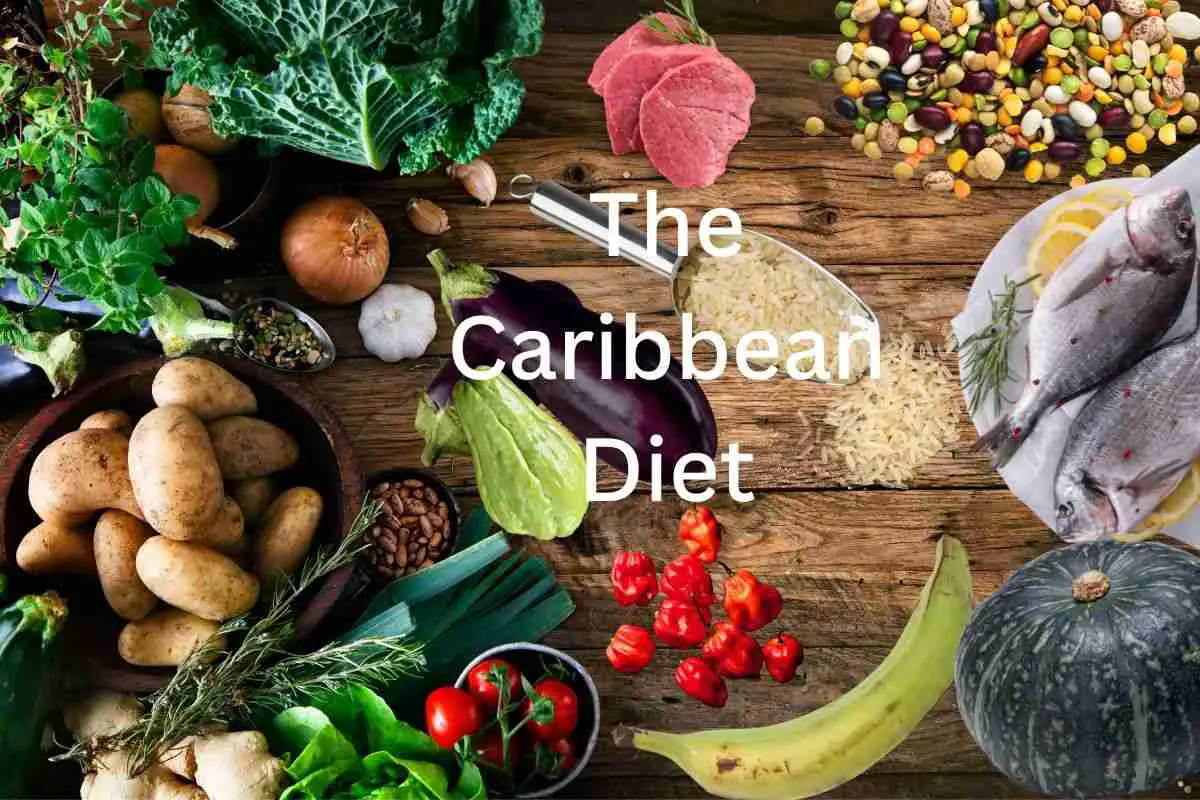The Ultimate Guide to Safely Washing Fruits and Vegetables: Top Tips for Keeping Your Produce Clean and Healthy
Eating fresh fruits and vegetables is a vital part of a healthy diet. However, it’s crucial to ensure that your produce is clean and free from harmful bacteria and contaminants. Improperly washed produce can lead to foodborne illnesses, which can cause severe health problems.
In this comprehensive guide, we’ll explore the best practices for safely washing your fruits and vegetables. From simple rinsing techniques to more advanced cleaning methods, we’ll cover everything you need to know to keep your produce clean and safe. By following these guidelines, you can reduce your risk of foodborne illness and enjoy the full benefits of a nutritious diet.
The Importance of Washing Fruits and Vegetables
Fruits and vegetables are often treated with pesticides to protect them from insects and diseases, but these chemicals can leave harmful residues that may pose health risks to consumers. Studies suggest that consuming produce with pesticide residues is linked to various health issues, including hormonal imbalances and even certain cancers.
Additionally, fruits and vegetables can be contaminated with bacteria and pathogens during their journey from farm to table. Washing them with plain water is often not enough to remove these contaminants, making a natural wash a necessary step in ensuring your food is safe to eat.
Even if you plan to peel your fruits and vegetables, washing them first is crucial. Bacteria can be transferred from the outer surface to the inner parts during the peeling process. Washing your produce significantly reduces the risk of foodborne illnesses caused by harmful bacteria like E. coli, Salmonella, and Listeria.

Why is it important to wash your produce, even if you peel it?
- Bacteria Transfer: During the peeling process, bacteria can be transferred from the outer surface to the inner parts of the fruit or vegetable.
- Reduced Risk of Foodborne Illness: Washing your produce can significantly reduce the risk of foodborne illnesses caused by harmful bacteria.
By taking the time to properly wash your fruits and vegetables, you can protect yourself and your family from these potential health risks.
Understanding the Risks of Consuming Unwashed Produce
Consuming unwashed produce can pose significant health risks. Harmful bacteria, pesticides, and other contaminants can be present on the surface of fruits and vegetables, even those that appear clean.
Potential Risks:
- Foodborne Illnesses: Unwashed produce can harbor harmful bacteria such as E. coli, Salmonella, and Listeria. These bacteria can cause severe foodborne illnesses, leading to symptoms like diarrhea, vomiting, abdominal cramps, and fever.
- Pesticide Residue: Pesticides are used to protect crops from pests and diseases. While they are regulated, some residue may remain on produce. Consuming produce with pesticide residue can have potential health implications, especially for vulnerable populations like children and pregnant women.
- Other Contaminants: Unwashed produce can also be contaminated with dirt, soil, and other debris, which can harbor harmful microorganisms.
By taking the time to properly wash your produce, you can significantly reduce your risk of foodborne illness and other health problems associated with consuming contaminated produce.

Washing vs. Rinsing: What’s the Difference?
While these terms are often used interchangeably, there’s a subtle distinction between washing and rinsing produce.
- Rinsing: This involves running cold water over the produce to remove loose dirt and debris. It’s a quick and easy way to clean fruits and vegetables with smooth surfaces.
- Washing: This involves scrubbing the produce with your hands or a vegetable brush under running water. Washing is more thorough and is necessary for produce with rough surfaces, like potatoes or carrots, or those with crevices, like lettuce or berries.
Why is Washing Important?
Washing is essential because it helps remove:
- Dirt and Debris: These can harbor harmful bacteria.
- Pesticide Residue: While regulations limit pesticide use, some residue may remain on produce.
- Bacteria: Harmful bacteria like E. coli, Salmonella, and Listeria can be present on the surface of produce.
By taking the time to properly wash your produce, you can significantly reduce your risk of foodborne illness. Sources and related content
Step-by-Step Guide to Washing Vegetables and Fruits
Here’s a simple, step-by-step guide to safely wash your produce:
- Prepare Your Workspace:
- Choose a clean, sanitized surface, like a countertop or sink.
- Gather your tools: a large bowl, a colander, a vegetable brush, and clean running water.
- Rinse Thoroughly:
- Rinse your produce under cold running water. This helps remove loose dirt and debris.
- For fruits and vegetables with firm skins (like apples, potatoes, and carrots), use a vegetable brush to gently scrub the surface.
- For leafy greens (like lettuce and spinach), separate the leaves and rinse them thoroughly under running water.
- Soaking (Optional):
- For produce with delicate leaves or irregular surfaces, you can soak it in a bowl of clean water with a small amount of food-grade vinegar or lemon juice. This can help loosen dirt and bacteria.
- Soak for about 5-10 minutes, then rinse thoroughly with clean water.
- Drying:
- After washing, dry your produce thoroughly with a clean paper towel or a salad spinner. Excess moisture can promote bacterial growth.
Additional Tips:
- Avoid Cross-Contamination:
- Wash your hands with soap and water before and after handling produce.
- Use separate cutting boards for raw meat and produce.
- Clean your cutting boards, knives, and utensils thoroughly after each use.
- Store Properly:
- Store washed produce in clean, dry containers in the refrigerator.
- Avoid overcrowding your refrigerator, as this can lead to spoilage.
- Check for Spoilage:
- Regularly inspect your produce for signs of spoilage, such as mold, discoloration, or unusual odors.
- Discard any produce that appears spoiled.
By following these simple steps, you can effectively clean your fruits and vegetables and reduce the risk of foodborne illnesses.

Natural Solutions for Cleaning Produce
While regular water is effective for cleaning most produce, you can enhance the cleaning process with natural solutions. Here are a few options:
- Vinegar Solution: A mixture of water and white vinegar can help remove bacteria and pesticides. Fill a bowl with water and add a splash of vinegar. Soak your produce for a few minutes, then rinse thoroughly with water.
- Lemon Juice: Similar to vinegar, lemon juice has natural antibacterial properties. You can use it in the same way as vinegar, soaking your produce in a water and lemon juice solution.
- Baking Soda: Baking soda can help remove dirt and pesticides. Create a paste with baking soda and water, scrub your produce gently, and then rinse thoroughly.
Remember, while these natural solutions can be effective, they should not replace thorough washing with water. Always follow the specific guidelines for each type of produce to ensure optimal cleanliness.
Tips for Handling and Storing Produce to Maintain Cleanliness
Proper handling and storage are crucial for maintaining the cleanliness and freshness of your produce. Here are some tips:
Handling:
- Wash Your Hands: Always wash your hands with soap and water before and after handling produce.
- Avoid Cross-Contamination: Use separate cutting boards for raw meat and produce.
- Clean Utensils: Wash knives, cutting boards, and other utensils thoroughly with hot, soapy water after each use.
Storage:
- Refrigerate Promptly: Refrigerate perishable produce as soon as possible.
- Store Properly: Store different types of produce in appropriate containers to prevent moisture loss and spoilage.
- Leafy Greens: Wrap in damp paper towels and store in a plastic bag in the crisper drawer.
- Fruits and Vegetables: Store in separate drawers to prevent ethylene gas from ripening them too quickly.
- Check Regularly: Inspect your produce regularly for signs of spoilage, such as mold or discoloration. Discard any spoiled items immediately.
By following these tips, you can ensure that your produce remains clean, fresh, and safe to consume.
Let’s Start by Debunking Common Myths About Washing Produce
Let’s dispel some common misconceptions about washing produce:
Myth 1: Organic Produce Doesn’t Need Washing
Fact: Even organic produce can be contaminated with bacteria, pesticides, or dirt. It’s essential to wash all produce thoroughly, regardless of whether it’s organic or conventionally grown.
Myth 2: A Quick Rinse is Enough
Fact: While a quick rinse can remove loose dirt, it’s not enough to eliminate all bacteria and contaminants. Scrubbing firmer produce with a vegetable brush and soaking leafy greens in a water bath can help ensure thorough cleaning.
Myth 3: Soap and Detergent Can Be Used to Wash Produce
Fact: Soap and detergent are not designed for food consumption. They can leave harmful residues on your produce. Stick to plain water or a mild, food-safe cleaner.
Myth 4: Pre-washed Produce is Clean
Fact: While pre-washed produce undergoes a cleaning process, it’s still recommended to give it a quick rinse at home to remove any potential contaminants that may have been introduced during packaging or transportation.
Myth 5: Peeling or Cooking Eliminates the Need for Washing
Fact: Bacteria can be transferred from the outer surface to the inner parts of fruits and vegetables during the peeling or cutting process.
It’s crucial to wash produce before peeling or cooking to minimize the risk of contamination. Sources and related content
The Role of Organic Produce in Food Safety
While organic produce doesn’t guarantee complete freedom from bacteria or other contaminants, it does offer certain advantages in terms of food safety:
- Reduced Pesticide Exposure: Organic farming practices limit the use of synthetic pesticides, which can reduce exposure to potentially harmful chemicals. However, it’s important to note that organic farmers do use natural pesticides, so washing produce is still essential.
- Focus on Soil Health: Organic farming emphasizes soil health, which can lead to healthier plants and potentially reduce the risk of certain foodborne illnesses.
- Stricter Regulations: Organic certification involves rigorous standards, including food safety practices. This can help ensure that organic produce is handled and processed hygienically.
However, it’s important to remember that both organic and conventionally grown produce can be contaminated with bacteria. Therefore, washing all produce thoroughly, regardless of its origin, is crucial to minimize the risk of foodborne illness.

Choosing the Right Produce Washing Tools and Products
The right tools and products can make produce washing easier and more effective. Here’s a guide to help you select the best options:
Essential Tools:
- Vegetable Brush: A vegetable brush with firm bristles is ideal for scrubbing the surface of fruits and vegetables with tough skins, such as potatoes, carrots, and apples.
- Colander: A colander is useful for rinsing produce and draining excess water.
- Cutting Board: A clean cutting board is essential for preparing produce. Consider using separate cutting boards for raw meat and produce to prevent cross-contamination.
- Clean Towels: Use clean towels to dry your produce after washing.
Optional Products:
- Produce Wash: While not strictly necessary, some people prefer to use a commercial produce wash to eliminate bacteria and pesticides. Look for products that are food-safe and free of harsh chemicals.
- Vinegar: A simple solution of water and vinegar can be effective in removing bacteria and pesticides.
- Baking Soda: Baking soda can help remove dirt and pesticides. Mix it with water to create a paste and scrub your produce gently.
Key Considerations:
- Food Safety: Always prioritize food safety. Choose products that are safe for consumption and follow recommended cleaning practices.
- Environmental Impact: Consider eco-friendly options, such as reusable produce bags and biodegradable cleaning products.
- Personal Preference: Ultimately, the best tools and products for you will depend on your personal preferences and needs.
By selecting the right tools and products, you can ensure that your produce is clean, safe, and ready to enjoy.
Conclusion: Prioritizing Food Safety Through Proper Produce Washing
By following the simple yet effective guidelines outlined in this guide, you can significantly reduce your risk of foodborne illnesses and ensure the safety of your family. Remember, proper produce washing is a crucial step in maintaining food safety and enjoying the nutritional benefits of fresh fruits and vegetables.
Prioritize food safety by:
- Washing all produce thoroughly, even if you plan to peel it.
- Using clean water and appropriate cleaning tools.
- Avoiding cross-contamination by keeping your workspace clean and separating raw meat from produce.
- Storing produce correctly to maintain freshness and prevent spoilage.
By making these small changes to your routine, you can protect yourself and your loved ones from the potential dangers of foodborne illnesses. So, let’s commit to safe food handling practices and savor the flavors of fresh, clean produce with confidence.
Source:
- https://extension.umn.edu/preserving-and-preparing/wash-fresh-fruits-and-vegetables#
- https://newsnetwork.mayoclinic.org/discussion/mayo-clinic-minute-why-you-need-to-wash-your-fresh-produce/
- https://www.slc.gov/sustainability/pesticidefree-2/avoid-pesticide-residue/
- https://www.gardengatemagazine.com/review/cleaning-vegetables/
- https://www.ams.usda.gov/services/organic-certification/organic-basics
- https://www.mayoclinic.org/healthy-lifestyle/nutrition-and-healthy-eating/in-depth/organic-food/art-20043880
- https://doh.wa.gov/you-and-your-family/food-safety/food-safety-myths
- https://www.usda.gov/media/blog/2012/10/10/organic-101-five-steps-organic-certification
- https://ocia.org/2023/08/23/healthy-soil-foundation-of-organic-farming/
- https://www.veggiwash.co.uk/fruit-vegetable-washing-equipment
- https://www.eatright.org/food/home-food-safety/wash-and-separate-foods/cutting-board-safety
- https://www.fsis.usda.gov/food-safety/safe-food-handling-and-preparation/food-safety-basics/cutting-boards
Originally published December 6, 2019. Revised and updated on November 16, 2024. Updated with new content.






